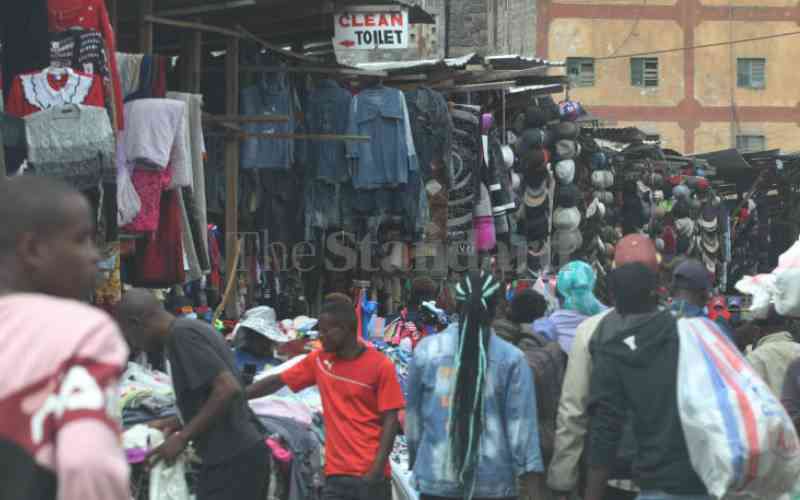Rift Valley, Kenya: On the floor of the scenic Rift Valley, temperatures can be torturous. Rocks, shrubs and parched plains are key features in the vast Baringo County, whose large swathes lie within the valley formed millions of years ago.
But for people living next to a patch of land near Lake Baringo, fortunes have taken a surprising good turn, thanks to one of nature’s miracles. Twenty years ago, Rivers Perkerra and Molo burst their banks, flooding and nourishing nearby wastelands. That was in 1994.
As the years went by, the floods continued, expanding into a lake that brought the once dead plains alive. Trees blossomed. Birds came to quench their thirst alongside herders with their cattle. It was like one big magnet of life.
Among those attracted to the place is Daniel Lenakure, currently the area chief. “This lake is a blessing,” he says referring to the mass locals now call Lake 94.
“Now, we have water and fish for our people. Some people have changed their lifestyles from pastoralism to crop farming,” he says.
Currently, two tributaries drain their water into the lake, which has been expanding towards Lake Baringo.
About 40 kilometres away in Marigat town, one can see the two shimmering lakes that seem to be courting a union. They are separated by a strip of land barely seven kilometres wide and it is believed that they will eventually merge.
Long before the lake emerged, the over 2,000 square-kilometre field now filled with water, used to be a bare grazing field for the pastoralist Ilchamus (Njemps) community.
Lifestyle impact
Chief Lenakure pauses to assess the impact of the water on people, animals and even lifestyle.
Currently, he says nearly 5,000 acres of land is under irrigation.
The lake serves about 1,000 people from various villages in Kiserian location such as Sirata, Oldepesi, Silango, Lorok and Loitip where most residents are showing interest in farming.
Samson ole Kidogo was there when the magic started. Today, he lacks words to describe the transformation of a place where herders could hardly get water and even pasture for their animals.
“It all started as a seasonal lake that could dry up during the dry spell. It kept on growing and now it is a permanent lake serving the people. We never used to eat fish but now we do,” Kidogo says.
About a kilometre from the lake, we found healthy maize plantations standing in sharp contrast with the rest of the county. One farmer, Joel Lempaka, owns a three-acre piece of land which he has put under maize. He expects a bumper harvest in one month’s time: “We have for years depended on relief food. When irrigation was introduced, we realised water from Lake 94 can actually be used to grow food.”
Stay informed. Subscribe to our newsletter
Adjacent to his farm, are several other small-scale maize plantations and some have planted kales which are green owing to the fertile soils. Farmers say they should be empowered more to expand their farming.
Area Governor Benjamin Cheboi says the county government has invested Sh234 million in the 2013/2014 budget for water projects. It is set to increase the land under irrigation from the current acreage of 6,500 acres to 50,000 acres in the next five years.
Bird-watching haven
Surrounded by rich soils, Lake 94 is a good target for such projects in a county where over 100,000 residents are facing hunger and starvation.
The lake is a potential bird-watching haven due to a high population of different species of birds migrating from Lake Nakuru and Elementaita. We found flocks of ostriches gracefully strolling around the lake.
The County Minister in-charge of Tourism Wesley Keitany, who spoke to The Standard on Saturday when he arrived back in the country after attending an international Bird fair in Rutland, Leicester City in the UK said there was potential for tourism.
“With over 500 bird species in Lake Baringo, over 490 in Lake Bogoria and Lake 94 and several scattered birds in cliffs and shrubs, Baringo is the next birding destination with a big number of beautiful bird species but still untapped,” said Keitany.
The county is targeting over Sh50 million annually from bird-watching. However, not everything has been rosy. Due to invasion of papyrus reeds and hyacinth, locally made boats can barely operate.
But it is displacement of people by flooding and killings by animals that have been seen as the biggest blot to the lake’s blessings.
Recently, during the heavy rains, over 5,000 residents were displaced in Ilchamus ward as the two lakes kept on swelling and spilling into villages 10 Kilometres away.
People were forced to move to nearby villages, where they lived in squalid conditions. Schools such as Salabani, Ng’ambo, Ilngarua, Loropil, Sintan and Masai were the most affected, with pupils wading through despite the risk posed by crocodiles and hippos.
Kidogo’s neighbour Joseph Mbugua, was recently mauled by a hippo. “It also injured two people at their farm. Crocodiles have also killed uncountable number of goats,” says Kidogo.
Despite all these, villagers are counting their blessings brought by Lake 94.
 The Standard Group Plc is a
multi-media organization with investments in media platforms spanning newspaper
print operations, television, radio broadcasting, digital and online services. The
Standard Group is recognized as a leading multi-media house in Kenya with a key
influence in matters of national and international interest.
The Standard Group Plc is a
multi-media organization with investments in media platforms spanning newspaper
print operations, television, radio broadcasting, digital and online services. The
Standard Group is recognized as a leading multi-media house in Kenya with a key
influence in matters of national and international interest.
 The Standard Group Plc is a
multi-media organization with investments in media platforms spanning newspaper
print operations, television, radio broadcasting, digital and online services. The
Standard Group is recognized as a leading multi-media house in Kenya with a key
influence in matters of national and international interest.
The Standard Group Plc is a
multi-media organization with investments in media platforms spanning newspaper
print operations, television, radio broadcasting, digital and online services. The
Standard Group is recognized as a leading multi-media house in Kenya with a key
influence in matters of national and international interest.








